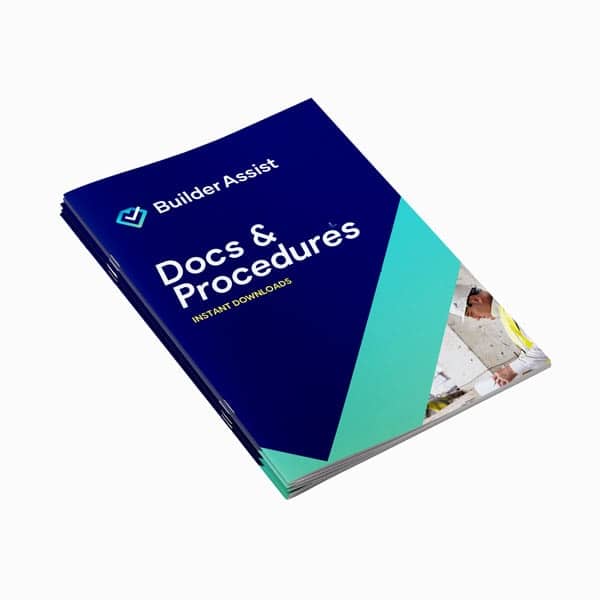
Safety is the cornerstone of any successful construction project. As a foreman, your role in maintaining that safety cannot be overstated.
A foreman on a construction site wears many hats, but ensuring the well-being of your crew is the most critical responsibility. From conducting toolbox talks to enforcing safety protocols, your leadership directly impacts safety on-site.
In this guide, we'll explore your essential foreman construction site safety responsibilities. We'll also provide you with a checklist to help keep your team safe and project running smoothly.

As a foreman, you are the leader when it comes to construction site safety. Your role is critical in ensuring that every worker goes home safe at the end of the day.
Understanding the Foreman’s Role in Safety
As a foreman on a construction site, you are the first line of defence against accidents and injuries. Your job is to make sure that safety is a daily practice that every worker follows. You are responsible for overseeing the implementation of safety measures and ensuring that every task is carried out in compliance with safety regulations.
Your leadership in safety sets the tone for the entire site. If you prioritise safety, your team will too. This means being proactive, staying vigilant, and always leading by example.
The Importance of Toolbox Talks
Toolbox talks are short, focused safety meetings. They're held on-site to discuss specific safety issues related to the tasks at hand. These talks are essential for keeping safety top-of-mind and ensuring that workers are aware of potential hazards before they start their workday.
As a foreman, it’s your responsibility to lead these talks effectively. Make them engaging and relevant by discussing recent incidents, addressing worker concerns, and highlighting specific safety practices. Regular toolbox talks help reinforce the importance of safety and provide a platform for open communication.
Enforcing Safety Protocols
One of the most important roles of a foreman on a construction site is enforcing safety protocols. This includes ensuring that all workers are wearing the appropriate personal protective equipment (PPE). In addition, workers must follow safety procedures, and adhering to the rules of the site.
Being consistent in enforcing these protocols is key. Workers need to understand that safety is non-negotiable, and any violations will be addressed immediately. By maintaining a strong stance on safety, you can help prevent accidents before they happen.
Managing Incident Reporting
Despite the best efforts, accidents can still happen on-site. When they do, it’s crucial to manage incident reporting effectively. As a foreman, you are responsible for ensuring that all incidents, no matter how minor, are reported and documented properly.
Incident reporting isn't just about filling out forms; it's about understanding what went wrong and how to prevent it from happening again. This involves conducting thorough investigations and implementing corrective actions to improve site safety.
For more about incident reporting, visit our blog Incident Reporting Procedure for Construction.
Essential Safety Management Documents
To effectively manage safety on a construction site, you need to be familiar with a range of safety management documents. These documents are crucial for tracking safety practices, identifying risks, and ensuring compliance with regulations. Here’s a list of essential safety management documents every foreman should know:
- Safety Management Plan: Outlines the overall safety procedures for the site.
- Risk Assessments: Identifies potential hazards and evaluates the risks associated with them.
- Safe Work Method Statements (SWMS): Details the specific safety procedures for high-risk tasks.
- Toolbox Talk Documents: Provide guidelines for conducting effective toolbox talks. In addition, they document topics discussed and keep track of attendance and participation.
- Accident or Incident Policy and Procedures: Alerts management about an incident as soon as it occurs. Moreover, it records the details of any injuries that occur on-site and tracks the investigation process and outcomes for each incident.
Conducting Risk Assessments
Risk assessments are a critical part of construction site safety. As a foreman, you need to ensure that risk assessments are conducted regularly and that all identified risks are addressed. This involves evaluating the potential hazards of each task. Importantly, you need to determine the likelihood of an incident occurring, and implement control measures to mitigate the risks.
By staying on top of risk assessments, you can help prevent accidents and ensure that your site remains safe for all workers.
Handling Emergency Situations
In the event of an emergency, quick and decisive action is essential. As a foreman, you need to be prepared to handle emergencies. Whether it’s a fire, a serious injury, or a structural collapse. This means knowing the emergency procedures inside and out and ensuring that your team is trained to respond appropriately. For electrical-related emergencies, ensuring that the team is familiar with the electrical SWMS is critical to managing the risks involved safely.
Regular drills can help prepare your team for the unexpected and ensure everyone knows what to do in a crisis.
What is the Difference Between a Foreman and a Leading Hand?
A foreman and a leading hand both play crucial roles on a construction site, but their responsibilities and levels of authority differ significantly. The foreman is typically in charge of overseeing the entire construction site. They ensure the project is completed on time and within budget. In addition, they manage multiple teams, coordinate with other site supervisors, and enforce safety protocols. The foreman is the primary point of contact between the workers and the project manager or site engineer. They making high-level decisions that impact the project's overall success.
In contrast, the leading hand works directly under the foreman. They are responsible for supervising a smaller group of workers, usually within a specific trade or task. While both roles involve leadership, the leading hand’s focus is more hands-on. They ensure the tasks assigned by the foreman are carried out efficiently and to the required standard. They often work alongside the crew, providing guidance and ensuring that the work is completed to the foreman’s specifications.
In essence, the foreman takes on a broader management role, while the leading hand ensures the practical execution of the foreman’s directives.
Leading the Way in Construction Site Safety
As a foreman, you are the leader when it comes to construction site safety. Your role is critical in ensuring every worker goes home safe at the end of the day. By staying informed, enforcing safety protocols, and leading by example, you can create a safer, more efficient work environment for everyone.
Remember, safety isn’t just a task—it’s a responsibility that impacts every aspect of your project. Stay vigilant, stay organised with safety documentation, and keep safety at the forefront of everything you do.

Safety Management Plans (WHS)
Specifically designed for each trade starting up a business, these Work Health Safety Management Plans or WHS Management Plans, provide support with the management of Work Health & Safety in the workplace.Also referred to as Occupational Health & Safety (OH&S) the material provided in this section will assist with WHS/OHS management and training requirements for the workplace.


